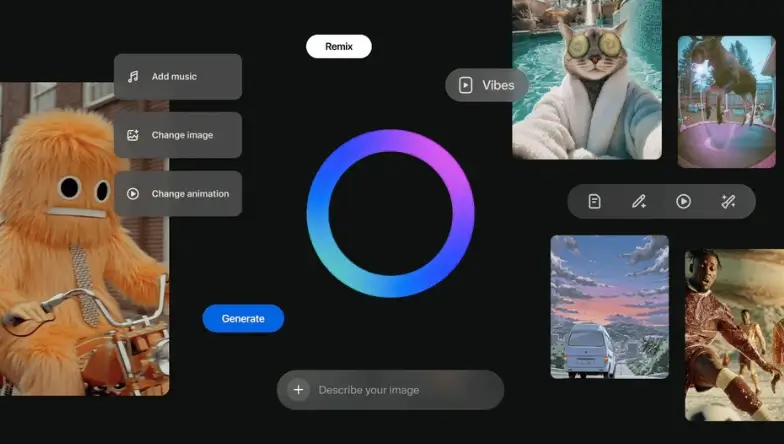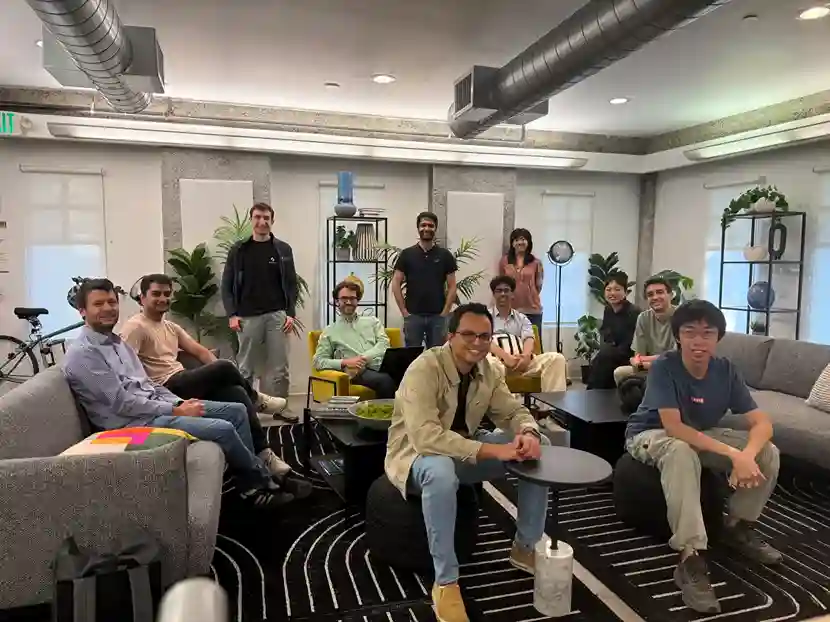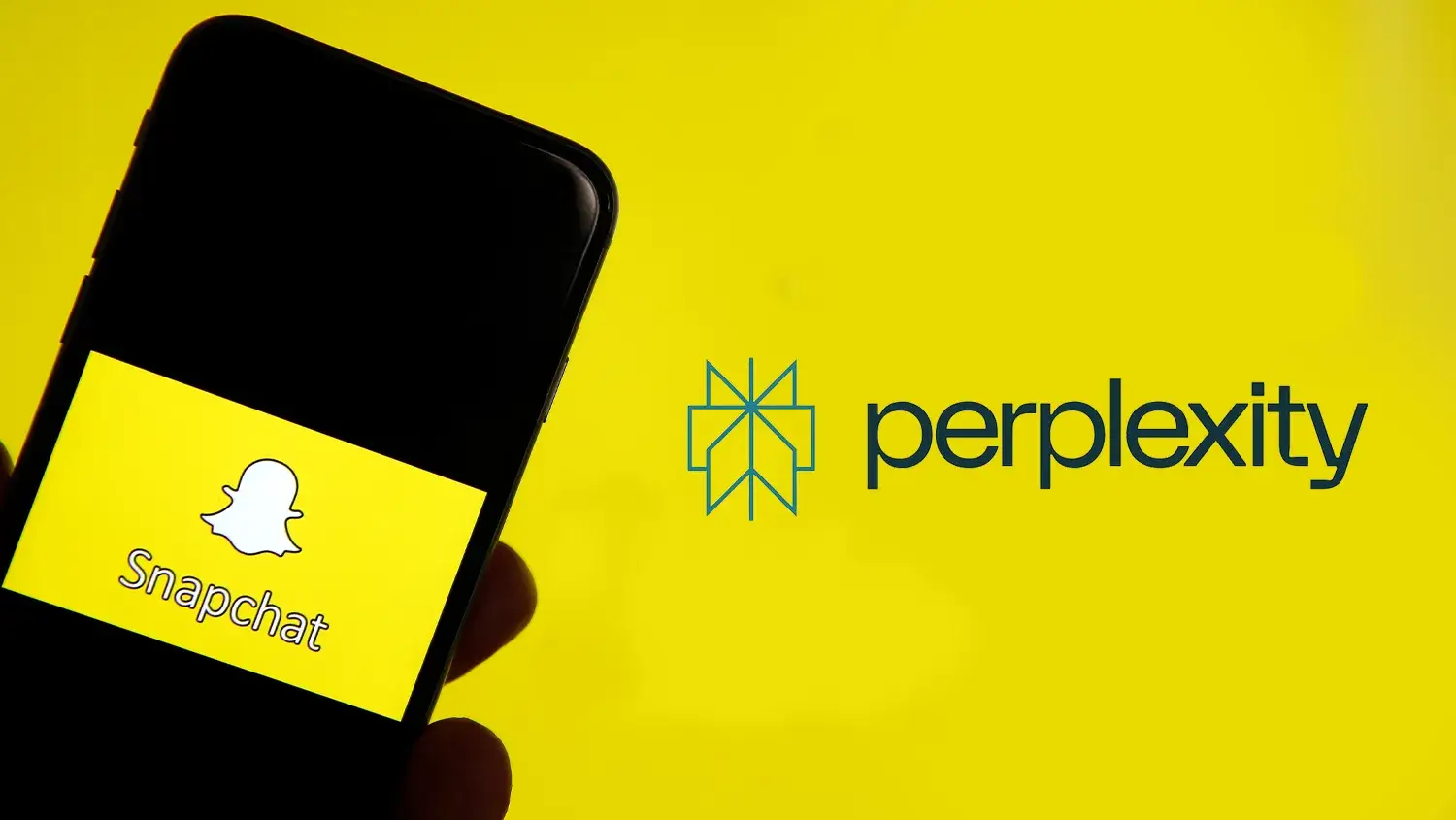Open Source AI Isn’t Just for Startups
How NVIDIA is turning collaboration into industry dominance.
![{"type":"elementor","siteurl":"https://itirupati.com/wp-json/","elements":[{"id":"648b8fb","elType":"widget","isInner":false,"isLocked":false,"settings":{"editor":"<p data-start=\"1296\" data-end=\"1805\"> </p><p data-start=\"1296\" data-end=\"1805\">NVIDIA is positioning itself as the backbone of open-source AI innovation. During <strong data-start=\"1378\" data-end=\"1440\"><a class=\"decorated-link cursor-pointer\" target=\"_new\" rel=\"noopener\" data-start=\"1380\" data-end=\"1438\">Open Source AI Week</a></strong>, the company highlighted its strategic commitment to collaborative development, emphasizing its deep integration with widely adopted frameworks like <strong data-start=\"1590\" data-end=\"1625\"><a class=\"decorated-link cursor-pointer\" target=\"_new\" rel=\"noopener\" data-start=\"1592\" data-end=\"1623\">PyTorch</a></strong>. By making GPU acceleration more accessible to developers, NVIDIA is not only empowering creators but also solidifying its hardware platform as central to future AI development.</p><p data-start=\"1807\" data-end=\"2404\">A cornerstone of this effort is NVIDIA’s enhanced <strong data-start=\"1857\" data-end=\"1956\"><a class=\"decorated-link cursor-pointer\" target=\"_new\" rel=\"noopener\" data-start=\"1859\" data-end=\"1954\">PyTorch integration</a></strong>. By elevating Python to a first-class language within its CUDA platform, NVIDIA allows PyTorch developers to optimize GPU performance more efficiently. The open-sourcing of <strong data-start=\"2130\" data-end=\"2145\">CUDA Python</strong> simplifies kernel fusion, streamlines deployment, and provides built-in support for advanced computing techniques. For developers, this is a direct improvement in productivity and scalability, while NVIDIA secures its position at the heart of AI pipelines.</p><p data-start=\"2406\" data-end=\"2976\">The numbers highlight the scale of this impact. PyTorch averages over two million daily downloads, while NVIDIA’s libraries, including <strong data-start=\"2541\" data-end=\"2594\"><a class=\"decorated-link cursor-pointer\" target=\"_new\" rel=\"noopener\" data-start=\"2543\" data-end=\"2592\">CUDA</a></strong> and cuDNN, see nearly half a billion monthly downloads, mostly in Python and PyTorch environments. The release of the <strong data-start=\"2713\" data-end=\"2738\">nvmath-python library</strong> further bridges Python code with optimized GPU libraries, making high-performance computing more adaptable and efficient. With this approach, NVIDIA ensures that its hardware remains the preferred choice for AI research and production.</p><p data-start=\"2978\" data-end=\"3594\">NVIDIA’s commitment extends beyond a single framework. Its contributions to <strong data-start=\"3054\" data-end=\"3097\"><a class=\"decorated-link cursor-pointer\" target=\"_new\" rel=\"noopener\" data-start=\"3056\" data-end=\"3095\">Hugging Face</a></strong> repositories, including more than 1,000 open-source tools on GitHub, hundreds of pre-trained models, and diverse datasets, highlight a broader dedication to the AI community. By sharing resources openly, NVIDIA accelerates discovery, reduces barriers to entry, and encourages developers to experiment without proprietary restrictions. This not only fosters innovation but also embeds NVIDIA’s technology across the entire AI ecosystem—from foundational libraries to application-ready solutions.</p><p data-start=\"3596\" data-end=\"4171\">Open-source collaboration also reinforces NVIDIA’s market strategy. By making advanced tools accessible and easy to integrate, the company strengthens its ecosystem and ensures long-term adoption. Developers gain efficiency, flexibility, and creative freedom, while organizations can build scalable AI applications without being locked into closed systems. For enterprises, this combination of open frameworks and powerful GPUs offers a competitive advantage, allowing them to leverage NVIDIA’s infrastructure for everything from research prototypes to production-grade AI.</p><p data-start=\"4173\" data-end=\"4612\">The strategic alignment between open-source software and hardware acceleration positions NVIDIA uniquely in the AI landscape. Its efforts show that open collaboration and proprietary advantage can coexist. The result is a virtuous cycle: as developers adopt PyTorch and <a href=\"https://developer.nvidia.com/cuda-toolkit\" target=\"_blank\" rel=\"noopener\">CUDA</a> for high-performance computing, NVIDIA’s ecosystem grows stronger, attracting even more innovation and embedding its GPUs as a critical component in AI workflows.</p><p data-start=\"4614\" data-end=\"5046\">For developers, engineers, and organizations, these updates signal that staying current with <strong data-start=\"4707\" data-end=\"4785\"><a class=\"decorated-link cursor-pointer\" href=\"https://developer.nvidia.com/open-source\" target=\"_blank\" rel=\"noopener\" data-start=\"4709\" data-end=\"4783\">NVIDIA open-source initiatives</a></strong> is not optional—it’s foundational. Whether optimizing deep learning models, experimenting with generative AI, or deploying large-scale solutions, the integration of PyTorch and CUDA Python makes NVIDIA tools indispensable for creating cutting-edge solutions.</p><p data-start=\"4614\" data-end=\"5046\">-</p><p data-start=\"4614\" data-end=\"5046\">Explore NVIDIA’s open-source AI ecosystem and see how <strong data-start=\"5138\" data-end=\"5185\"><a class=\"decorated-link cursor-pointer\" href=\"https://pytorch.org\" target=\"_blank\" rel=\"noopener\" data-start=\"5140\" data-end=\"5183\">PyTorch integration</a></strong> and CUDA Python can accelerate your AI projects. By leveraging these tools, developers and organizations can unlock new levels of performance and innovation, all while contributing to a collaborative, open AI community.</p>","text_color":"#FFFFFF","typography_font_family":"Poppins","typography_font_size":{"unit":"px","size":16,"sizes":[]},"typography_font_weight":"400","drop_cap":"","text_columns":"","text_columns_widescreen":"","text_columns_laptop":"","text_columns_tablet_extra":"","text_columns_tablet":"","text_columns_mobile_extra":"","text_columns_mobile":"","column_gap":{"unit":"px","size":"","sizes":[]},"column_gap_widescreen":{"unit":"px","size":"","sizes":[]},"column_gap_laptop":{"unit":"px","size":"","sizes":[]},"column_gap_tablet_extra":{"unit":"px","size":"","sizes":[]},"column_gap_tablet":{"unit":"px","size":"","sizes":[]},"column_gap_mobile_extra":{"unit":"px","size":"","sizes":[]},"column_gap_mobile":{"unit":"px","size":"","sizes":[]},"align":"","align_widescreen":"","align_laptop":"","align_tablet_extra":"","align_tablet":"","align_mobile_extra":"","align_mobile":"","typography_typography":"","typography_font_size_widescreen":{"unit":"px","size":"","sizes":[]},"typography_font_size_laptop":{"unit":"px","size":"","sizes":[]},"typography_font_size_tablet_extra":{"unit":"px","size":"","sizes":[]},"typography_font_size_tablet":{"unit":"px","size":"","sizes":[]},"typography_font_size_mobile_extra":{"unit":"px","size":"","sizes":[]},"typography_font_size_mobile":{"unit":"px","size":"","sizes":[]},"typography_text_transform":"","typography_font_style":"","typography_text_decoration":"","typography_line_height":{"unit":"px","size":"","sizes":[]},"typography_line_height_widescreen":{"unit":"px","size":"","sizes":[]},"typography_line_height_laptop":{"unit":"px","size":"","sizes":[]},"typography_line_height_tablet_extra":{"unit":"px","size":"","sizes":[]},"typography_line_height_tablet":{"unit":"em","size":"","sizes":[]},"typography_line_height_mobile_extra":{"unit":"px","size":"","sizes":[]},"typography_line_height_mobile":{"unit":"em","size":"","sizes":[]},"typography_letter_spacing":{"unit":"px","size":"","sizes":[]},"typography_letter_spacing_widescreen":{"unit":"px","size":"","sizes":[]},"typography_letter_spacing_laptop":{"unit":"px","size":"","sizes":[]},"typography_letter_spacing_tablet_extra":{"unit":"px","size":"","sizes":[]},"typography_letter_spacing_tablet":{"unit":"px","size":"","sizes":[]},"typography_letter_spacing_mobile_extra":{"unit":"px","size":"","sizes":[]},"typography_letter_spacing_mobile":{"unit":"px","size":"","sizes":[]},"typography_word_spacing":{"unit":"px","size":"","sizes":[]},"typography_word_spacing_widescreen":{"unit":"px","size":"","sizes":[]},"typography_word_spacing_laptop":{"unit":"px","size":"","sizes":[]},"typography_word_spacing_tablet_extra":{"unit":"px","size":"","sizes":[]},"typography_word_spacing_tablet":{"unit":"em","size":"","sizes":[]},"typography_word_spacing_mobile_extra":{"unit":"px","size":"","sizes":[]},"typography_word_spacing_mobile":{"unit":"em","size":"","sizes":[]},"text_shadow_text_shadow_type":"","text_shadow_text_shadow":{"horizontal":0,"vertical":0,"blur":10,"color":"rgba(0,0,0,0.3)"},"paragraph_spacing":{"unit":"px","size":"","sizes":[]},"paragraph_spacing_widescreen":{"unit":"px","size":"","sizes":[]},"paragraph_spacing_laptop":{"unit":"px","size":"","sizes":[]},"paragraph_spacing_tablet_extra":{"unit":"px","size":"","sizes":[]},"paragraph_spacing_tablet":{"unit":"px","size":"","sizes":[]},"paragraph_spacing_mobile_extra":{"unit":"px","size":"","sizes":[]},"paragraph_spacing_mobile":{"unit":"px","size":"","sizes":[]},"link_color":"","link_hover_color":"","link_hover_color_transition_duration":{"unit":"s","size":"","sizes":[]},"drop_cap_view":"default","drop_cap_primary_color":"","drop_cap_secondary_color":"","drop_cap_shadow_text_shadow_type":"","drop_cap_shadow_text_shadow":{"horizontal":0,"vertical":0,"blur":10,"color":"rgba(0,0,0,0.3)"},"drop_cap_size":{"unit":"px","size":5,"sizes":[]},"drop_cap_space":{"unit":"px","size":10,"sizes":[]},"drop_cap_border_radius":{"unit":"%","size":"","sizes":[]},"drop_cap_border_width":{"unit":"px","top":"","right":"","bottom":"","left":"","isLinked":true},"drop_cap_typography_typography":"","drop_cap_typography_font_family":"","drop_cap_typography_font_size":{"unit":"px","size":"","sizes":[]},"drop_cap_typography_font_size_widescreen":{"unit":"px","size":"","sizes":[]},"drop_cap_typography_font_size_laptop":{"unit":"px","size":"","sizes":[]},"drop_cap_typography_font_size_tablet_extra":{"unit":"px","size":"","sizes":[]},"drop_cap_typography_font_size_tablet":{"unit":"px","size":"","sizes":[]},"drop_cap_typography_font_size_mobile_extra":{"unit":"px","size":"","sizes":[]},"drop_cap_typography_font_size_mobile":{"unit":"px","size":"","sizes":[]},"drop_cap_typography_font_weight":"","drop_cap_typography_text_transform":"","drop_cap_typography_font_style":"","drop_cap_typography_text_decoration":"","drop_cap_typography_line_height":{"unit":"px","size":"","sizes":[]},"drop_cap_typography_line_height_widescreen":{"unit":"px","size":"","sizes":[]},"drop_cap_typography_line_height_laptop":{"unit":"px","size":"","sizes":[]},"drop_cap_typography_line_height_tablet_extra":{"unit":"px","size":"","sizes":[]},"drop_cap_typography_line_height_tablet":{"unit":"em","size":"","sizes":[]},"drop_cap_typography_line_height_mobile_extra":{"unit":"px","size":"","sizes":[]},"drop_cap_typography_line_height_mobile":{"unit":"em","size":"","sizes":[]},"drop_cap_typography_word_spacing":{"unit":"px","size":"","sizes":[]},"drop_cap_typography_word_spacing_widescreen":{"unit":"px","size":"","sizes":[]},"drop_cap_typography_word_spacing_laptop":{"unit":"px","size":"","sizes":[]},"drop_cap_typography_word_spacing_tablet_extra":{"unit":"px","size":"","sizes":[]},"drop_cap_typography_word_spacing_tablet":{"unit":"em","size":"","sizes":[]},"drop_cap_typography_word_spacing_mobile_extra":{"unit":"px","size":"","sizes":[]},"drop_cap_typography_word_spacing_mobile":{"unit":"em","size":"","sizes":[]},"_title":"","_margin":{"unit":"px","top":"","right":"","bottom":"","left":"","isLinked":true},"_margin_widescreen":{"unit":"px","top":"","right":"","bottom":"","left":"","isLinked":true},"_margin_laptop":{"unit":"px","top":"","right":"","bottom":"","left":"","isLinked":true},"_margin_tablet_extra":{"unit":"px","top":"","right":"","bottom":"","left":"","isLinked":true},"_margin_tablet":{"unit":"px","top":"","right":"","bottom":"","left":"","isLinked":true},"_margin_mobile_extra":{"unit":"px","top":"","right":"","bottom":"","left":"","isLinked":true},"_margin_mobile":{"unit":"px","top":"","right":"","bottom":"","left":"","isLinked":true},"_padding":{"unit":"px","top":"","right":"","bottom":"","left":"","isLinked":true},"_padding_widescreen":{"unit":"px","top":"","right":"","bottom":"","left":"","isLinked":true},"_padding_laptop":{"unit":"px","top":"","right":"","bottom":"","left":"","isLinked":true},"_padding_tablet_extra":{"unit":"px","top":"","right":"","bottom":"","left":"","isLinked":true},"_padding_tablet":{"unit":"px","top":"","right":"","bottom":"","left":"","isLinked":true},"_padding_mobile_extra":{"unit":"px","top":"","right":"","bottom":"","left":"","isLinked":true},"_padding_mobile":{"unit":"px","top":"","right":"","bottom":"","left":"","isLinked":true},"_element_width":"","_element_width_widescreen":"","_element_width_laptop":"","_element_width_tablet_extra":"","_element_width_tablet":"","_element_width_mobile_extra":"","_element_width_mobile":"","_element_custom_width":{"unit":"%","size":"","sizes":[]},"_element_custom_width_widescreen":{"unit":"px","size":"","sizes":[]},"_element_custom_width_laptop":{"unit":"px","size":"","sizes":[]},"_element_custom_width_tablet_extra":{"unit":"px","size":"","sizes":[]},"_element_custom_width_tablet":{"unit":"px","size":"","sizes":[]},"_element_custom_width_mobile_extra":{"unit":"px","size":"","sizes":[]},"_element_custom_width_mobile":{"unit":"px","size":"","sizes":[]},"_grid_column":"","_grid_column_widescreen":"","_grid_column_laptop":"","_grid_column_tablet_extra":"","_grid_column_tablet":"","_grid_column_mobile_extra":"","_grid_column_mobile":"","_grid_column_custom":"","_grid_column_custom_widescreen":"","_grid_column_custom_laptop":"","_grid_column_custom_tablet_extra":"","_grid_column_custom_tablet":"","_grid_column_custom_mobile_extra":"","_grid_column_custom_mobile":"","_grid_row":"","_grid_row_widescreen":"","_grid_row_laptop":"","_grid_row_tablet_extra":"","_grid_row_tablet":"","_grid_row_mobile_extra":"","_grid_row_mobile":"","_grid_row_custom":"","_grid_row_custom_widescreen":"","_grid_row_custom_laptop":"","_grid_row_custom_tablet_extra":"","_grid_row_custom_tablet":"","_grid_row_custom_mobile_extra":"","_grid_row_custom_mobile":"","_flex_align_self":"","_flex_align_self_widescreen":"","_flex_align_self_laptop":"","_flex_align_self_tablet_extra":"","_flex_align_self_tablet":"","_flex_align_self_mobile_extra":"","_flex_align_self_mobile":"","_flex_order":"","_flex_order_widescreen":"","_flex_order_laptop":"","_flex_order_tablet_extra":"","_flex_order_tablet":"","_flex_order_mobile_extra":"","_flex_order_mobile":"","_flex_order_custom":"","_flex_order_custom_widescreen":"","_flex_order_custom_laptop":"","_flex_order_custom_tablet_extra":"","_flex_order_custom_tablet":"","_flex_order_custom_mobile_extra":"","_flex_order_custom_mobile":"","_flex_size":"","_flex_size_widescreen":"","_flex_size_laptop":"","_flex_size_tablet_extra":"","_flex_size_tablet":"","_flex_size_mobile_extra":"","_flex_size_mobile":"","_flex_grow":1,"_flex_grow_widescreen":"","_flex_grow_laptop":"","_flex_grow_tablet_extra":"","_flex_grow_tablet":"","_flex_grow_mobile_extra":"","_flex_grow_mobile":"","_flex_shrink":1,"_flex_shrink_widescreen":"","_flex_shrink_laptop":"","_flex_shrink_tablet_extra":"","_flex_shrink_tablet":"","_flex_shrink_mobile_extra":"","_flex_shrink_mobile":"","_element_vertical_align":"","_element_vertical_align_widescreen":"","_element_vertical_align_laptop":"","_element_vertical_align_tablet_extra":"","_element_vertical_align_tablet":"","_element_vertical_align_mobile_extra":"","_element_vertical_align_mobile":"","_position":"","_offset_orientation_h":"start","_offset_x":{"unit":"px","size":0,"sizes":[]},"_offset_x_widescreen":{"unit":"px","size":"","sizes":[]},"_offset_x_laptop":{"unit":"px","size":"","sizes":[]},"_offset_x_tablet_extra":{"unit":"px","size":"","sizes":[]},"_offset_x_tablet":{"unit":"px","size":"","sizes":[]},"_offset_x_mobile_extra":{"unit":"px","size":"","sizes":[]},"_offset_x_mobile":{"unit":"px","size":"","sizes":[]},"_offset_x_end":{"unit":"px","size":0,"sizes":[]},"_offset_x_end_widescreen":{"unit":"px","size":"","sizes":[]},"_offset_x_end_laptop":{"unit":"px","size":"","sizes":[]},"_offset_x_end_tablet_extra":{"unit":"px","size":"","sizes":[]},"_offset_x_end_tablet":{"unit":"px","size":"","sizes":[]},"_offset_x_end_mobile_extra":{"unit":"px","size":"","sizes":[]},"_offset_x_end_mobile":{"unit":"px","size":"","sizes":[]},"_offset_orientation_v":"start","_offset_y":{"unit":"px","size":0,"sizes":[]},"_offset_y_widescreen":{"unit":"px","size":"","sizes":[]},"_offset_y_laptop":{"unit":"px","size":"","sizes":[]},"_offset_y_tablet_extra":{"unit":"px","size":"","sizes":[]},"_offset_y_tablet":{"unit":"px","size":"","sizes":[]},"_offset_y_mobile_extra":{"unit":"px","size":"","sizes":[]},"_offset_y_mobile":{"unit":"px","size":"","sizes":[]},"_offset_y_end":{"unit":"px","size":0,"sizes":[]},"_offset_y_end_widescreen":{"unit":"px","size":"","sizes":[]},"_offset_y_end_laptop":{"unit":"px","size":"","sizes":[]},"_offset_y_end_tablet_extra":{"unit":"px","size":"","sizes":[]},"_offset_y_end_tablet":{"unit":"px","size":"","sizes":[]},"_offset_y_end_mobile_extra":{"unit":"px","size":"","sizes":[]},"_offset_y_end_mobile":{"unit":"px","size":"","sizes":[]},"_z_index":"","_z_index_widescreen":"","_z_index_laptop":"","_z_index_tablet_extra":"","_z_index_tablet":"","_z_index_mobile_extra":"","_z_index_mobile":"","_element_id":"","_css_classes":"","_element_cache":"","eael_wrapper_link_switch":"","eael_wrapper_link":{"url":"","is_external":"","nofollow":"","custom_attributes":""},"eael_wrapper_link_disable_traditional":"","eael_hover_effect_switch":"","eael_hover_effect_enable_live_changes":"","eael_hover_effect_opacity_popover":"","eael_hover_effect_opacity":{"unit":"px","size":0.8,"sizes":[]},"eael_hover_effect_filter_popover":"","eael_hover_effect_blur_is_on":"","eael_hover_effect_blur":{"unit":"px","size":1,"sizes":[]},"eael_hover_effect_contrast_is_on":"","eael_hover_effect_contrast":{"unit":"px","size":80,"sizes":[]},"eael_hover_effect_grayscale_is_on":"","eael_hover_effect_grayscal":{"unit":"px","size":40,"sizes":[]},"eael_hover_effect_invert_is_on":"","eael_hover_effect_invert":{"unit":"px","size":70,"sizes":[]},"eael_hover_effect_saturate_is_on":"","eael_hover_effect_saturate":{"unit":"px","size":50,"sizes":[]},"eael_hover_effect_sepia_is_on":"","eael_hover_effect_sepia":{"unit":"px","size":50,"sizes":[]},"eael_hover_effect_offset_popover":"","eael_hover_effect_offset_left":{"unit":"px","size":5,"sizes":[]},"eael_hover_effect_offset_left_widescreen":{"unit":"px","size":"","sizes":[]},"eael_hover_effect_offset_left_laptop":{"unit":"px","size":"","sizes":[]},"eael_hover_effect_offset_left_tablet_extra":{"unit":"px","size":"","sizes":[]},"eael_hover_effect_offset_left_tablet":{"unit":"px","size":"","sizes":[]},"eael_hover_effect_offset_left_mobile_extra":{"unit":"px","size":"","sizes":[]},"eael_hover_effect_offset_left_mobile":{"unit":"px","size":"","sizes":[]},"eael_hover_effect_offset_top":{"unit":"px","size":5,"sizes":[]},"eael_hover_effect_offset_top_widescreen":{"unit":"px","size":"","sizes":[]},"eael_hover_effect_offset_top_laptop":{"unit":"px","size":"","sizes":[]},"eael_hover_effect_offset_top_tablet_extra":{"unit":"px","size":"","sizes":[]},"eael_hover_effect_offset_top_tablet":{"unit":"px","size":"","sizes":[]},"eael_hover_effect_offset_top_mobile_extra":{"unit":"px","size":"","sizes":[]},"eael_hover_effect_offset_top_mobile":{"unit":"px","size":"","sizes":[]},"eael_hover_effect_transform_popover":"","eael_hover_effect_rotate_is_on":"","eael_hover_effect_transform_rotatex":{"unit":"px","size":0,"sizes":[]},"eael_hover_effect_transform_rotatex_widescreen":{"unit":"px","size":"","sizes":[]},"eael_hover_effect_transform_rotatex_laptop":{"unit":"px","size":"","sizes":[]},"eael_hover_effect_transform_rotatex_tablet_extra":{"unit":"px","size":"","sizes":[]},"eael_hover_effect_transform_rotatex_tablet":{"unit":"px","size":"","sizes":[]},"eael_hover_effect_transform_rotatex_mobile_extra":{"unit":"px","size":"","sizes":[]},"eael_hover_effect_transform_rotatex_mobile":{"unit":"px","size":"","sizes":[]},"eael_hover_effect_transform_rotatey":{"unit":"px","size":0,"sizes":[]},"eael_hover_effect_transform_rotatey_widescreen":{"unit":"px","size":"","sizes":[]},"eael_hover_effect_transform_rotatey_laptop":{"unit":"px","size":"","sizes":[]},"eael_hover_effect_transform_rotatey_tablet_extra":{"unit":"px","size":"","sizes":[]},"eael_hover_effect_transform_rotatey_tablet":{"unit":"px","size":"","sizes":[]},"eael_hover_effect_transform_rotatey_mobile_extra":{"unit":"px","size":"","sizes":[]},"eael_hover_effect_transform_rotatey_mobile":{"unit":"px","size":"","sizes":[]},"eael_hover_effect_transform_rotatez":{"unit":"px","size":5,"sizes":[]},"eael_hover_effect_transform_rotatez_widescreen":{"unit":"px","size":"","sizes":[]},"eael_hover_effect_transform_rotatez_laptop":{"unit":"px","size":"","sizes":[]},"eael_hover_effect_transform_rotatez_tablet_extra":{"unit":"px","size":"","sizes":[]},"eael_hover_effect_transform_rotatez_tablet":{"unit":"px","size":"","sizes":[]},"eael_hover_effect_transform_rotatez_mobile_extra":{"unit":"px","size":"","sizes":[]},"eael_hover_effect_transform_rotatez_mobile":{"unit":"px","size":"","sizes":[]},"eael_hover_effect_scale_is_on":"","eael_hover_effect_transform_scalex":{"unit":"px","size":0.9,"sizes":[]},"eael_hover_effect_transform_scalex_widescreen":{"unit":"px","size":"","sizes":[]},"eael_hover_effect_transform_scalex_laptop":{"unit":"px","size":"","sizes":[]},"eael_hover_effect_transform_scalex_tablet_extra":{"unit":"px","size":"","sizes":[]},"eael_hover_effect_transform_scalex_tablet":{"unit":"px","size":"","sizes":[]},"eael_hover_effect_transform_scalex_mobile_extra":{"unit":"px","size":"","sizes":[]},"eael_hover_effect_transform_scalex_mobile":{"unit":"px","size":"","sizes":[]},"eael_hover_effect_transform_scaley":{"unit":"px","size":0.9,"sizes":[]},"eael_hover_effect_transform_scaley_widescreen":{"unit":"px","size":"","sizes":[]},"eael_hover_effect_transform_scaley_laptop":{"unit":"px","size":"","sizes":[]},"eael_hover_effect_transform_scaley_tablet_extra":{"unit":"px","size":"","sizes":[]},"eael_hover_effect_transform_scaley_tablet":{"unit":"px","size":"","sizes":[]},"eael_hover_effect_transform_scaley_mobile_extra":{"unit":"px","size":"","sizes":[]},"eael_hover_effect_transform_scaley_mobile":{"unit":"px","size":"","sizes":[]},"eael_hover_effect_skew_is_on":"","eael_hover_effect_transform_skewx":{"unit":"px","size":5,"sizes":[]},"eael_hover_effect_transform_skewx_widescreen":{"unit":"px","size":"","sizes":[]},"eael_hover_effect_transform_skewx_laptop":{"unit":"px","size":"","sizes":[]},"eael_hover_effect_transform_skewx_tablet_extra":{"unit":"px","size":"","sizes":[]},"eael_hover_effect_transform_skewx_tablet":{"unit":"px","size":"","sizes":[]},"eael_hover_effect_transform_skewx_mobile_extra":{"unit":"px","size":"","sizes":[]},"eael_hover_effect_transform_skewx_mobile":{"unit":"px","size":"","sizes":[]},"eael_hover_effect_transform_skewy":{"unit":"px","size":5,"sizes":[]},"eael_hover_effect_transform_skewy_widescreen":{"unit":"px","size":"","sizes":[]},"eael_hover_effect_transform_skewy_laptop":{"unit":"px","size":"","sizes":[]},"eael_hover_effect_transform_skewy_tablet_extra":{"unit":"px","size":"","sizes":[]},"eael_hover_effect_transform_skewy_tablet":{"unit":"px","size":"","sizes":[]},"eael_hover_effect_transform_skewy_mobile_extra":{"unit":"px","size":"","sizes":[]},"eael_hover_effect_transform_skewy_mobile":{"unit":"px","size":"","sizes":[]},"eael_hover_effect_general_settings_duration":{"unit":"px","size":1000,"sizes":[]},"eael_hover_effect_general_settings_delay":{"unit":"px","size":"","sizes":[]},"eael_hover_effect_general_settings_easing":"ease","eael_hover_effect_opacity_popover_hover":"","eael_hover_effect_opacity_hover":{"unit":"px","size":1,"sizes":[]},"eael_hover_effect_filter_hover_popover":"","eael_hover_effect_blur_hover_is_on":"","eael_hover_effect_blur_hover":{"unit":"px","size":0,"sizes":[]},"eael_hover_effect_contrast_hover_is_on":"","eael_hover_effect_contrast_hover":{"unit":"%","size":100,"sizes":[]},"eael_hover_effect_grayscale_hover_is_on":"","eael_hover_effect_grayscal_hover":{"unit":"%","size":0,"sizes":[]},"eael_hover_effect_invert_hover_is_on":"","eael_hover_effect_invert_hover":{"unit":"%","size":0,"sizes":[]},"eael_hover_effect_saturate_hover_is_on":"","eael_hover_effect_saturate_hover":{"unit":"%","size":100,"sizes":[]},"eael_hover_effect_sepia_hover_is_on":"","eael_hover_effect_sepia_hover":{"unit":"px","size":1,"sizes":[]},"eael_hover_effect_offset_hover_popover":"","eael_hover_effect_offset_hover_left":{"unit":"px","size":0,"sizes":[]},"eael_hover_effect_offset_hover_left_widescreen":{"unit":"px","size":"","sizes":[]},"eael_hover_effect_offset_hover_left_laptop":{"unit":"px","size":"","sizes":[]},"eael_hover_effect_offset_hover_left_tablet_extra":{"unit":"px","size":"","sizes":[]},"eael_hover_effect_offset_hover_left_tablet":{"unit":"px","size":"","sizes":[]},"eael_hover_effect_offset_hover_left_mobile_extra":{"unit":"px","size":"","sizes":[]},"eael_hover_effect_offset_hover_left_mobile":{"unit":"px","size":"","sizes":[]},"eael_hover_effect_offset_hover_top":{"unit":"px","size":0,"sizes":[]},"eael_hover_effect_offset_hover_top_widescreen":{"unit":"px","size":"","sizes":[]},"eael_hover_effect_offset_hover_top_laptop":{"unit":"px","size":"","sizes":[]},"eael_hover_effect_offset_hover_top_tablet_extra":{"unit":"px","size":"","sizes":[]},"eael_hover_effect_offset_hover_top_tablet":{"unit":"px","size":"","sizes":[]},"eael_hover_effect_offset_hover_top_mobile_extra":{"unit":"px","size":"","sizes":[]},"eael_hover_effect_offset_hover_top_mobile":{"unit":"px","size":"","sizes":[]},"eael_hover_effect_transform_hover_popover":"","eael_hover_effect_rotate_hover_is_on":"","eael_hover_effect_transform_hover_rotatex":{"unit":"px","size":0,"sizes":[]},"eael_hover_effect_transform_hover_rotatex_widescreen":{"unit":"px","size":"","sizes":[]},"eael_hover_effect_transform_hover_rotatex_laptop":{"unit":"px","size":"","sizes":[]},"eael_hover_effect_transform_hover_rotatex_tablet_extra":{"unit":"px","size":"","sizes":[]},"eael_hover_effect_transform_hover_rotatex_tablet":{"unit":"px","size":"","sizes":[]},"eael_hover_effect_transform_hover_rotatex_mobile_extra":{"unit":"px","size":"","sizes":[]},"eael_hover_effect_transform_hover_rotatex_mobile":{"unit":"px","size":"","sizes":[]},"eael_hover_effect_transform_hover_rotatey":{"unit":"px","size":0,"sizes":[]},"eael_hover_effect_transform_hover_rotatey_widescreen":{"unit":"px","size":"","sizes":[]},"eael_hover_effect_transform_hover_rotatey_laptop":{"unit":"px","size":"","sizes":[]},"eael_hover_effect_transform_hover_rotatey_tablet_extra":{"unit":"px","size":"","sizes":[]},"eael_hover_effect_transform_hover_rotatey_tablet":{"unit":"px","size":"","sizes":[]},"eael_hover_effect_transform_hover_rotatey_mobile_extra":{"unit":"px","size":"","sizes":[]},"eael_hover_effect_transform_hover_rotatey_mobile":{"unit":"px","size":"","sizes":[]},"eael_hover_effect_transform_hover_rotatez":{"unit":"px","size":0,"sizes":[]},"eael_hover_effect_transform_hover_rotatez_widescreen":{"unit":"px","size":"","sizes":[]},"eael_hover_effect_transform_hover_rotatez_laptop":{"unit":"px","size":"","sizes":[]},"eael_hover_effect_transform_hover_rotatez_tablet_extra":{"unit":"px","size":"","sizes":[]},"eael_hover_effect_transform_hover_rotatez_tablet":{"unit":"px","size":"","sizes":[]},"eael_hover_effect_transform_hover_rotatez_mobile_extra":{"unit":"px","size":"","sizes":[]},"eael_hover_effect_transform_hover_rotatez_mobile":{"unit":"px","size":"","sizes":[]},"eael_hover_effect_scale_hover_is_on":"","eael_hover_effect_transform_hover_scalex":{"unit":"px","size":1,"sizes":[]},"eael_hover_effect_transform_hover_scalex_widescreen":{"unit":"px","size":"","sizes":[]},"eael_hover_effect_transform_hover_scalex_laptop":{"unit":"px","size":"","sizes":[]},"eael_hover_effect_transform_hover_scalex_tablet_extra":{"unit":"px","size":"","sizes":[]},"eael_hover_effect_transform_hover_scalex_tablet":{"unit":"px","size":"","sizes":[]},"eael_hover_effect_transform_hover_scalex_mobile_extra":{"unit":"px","size":"","sizes":[]},"eael_hover_effect_transform_hover_scalex_mobile":{"unit":"px","size":"","sizes":[]},"eael_hover_effect_transform_hover_scaley":{"unit":"px","size":0,"sizes":[]},"eael_hover_effect_transform_hover_scaley_widescreen":{"unit":"px","size":"","sizes":[]},"eael_hover_effect_transform_hover_scaley_laptop":{"unit":"px","size":"","sizes":[]},"eael_hover_effect_transform_hover_scaley_tablet_extra":{"unit":"px","size":"","sizes":[]},"eael_hover_effect_transform_hover_scaley_tablet":{"unit":"px","size":"","sizes":[]},"eael_hover_effect_transform_hover_scaley_mobile_extra":{"unit":"px","size":"","sizes":[]},"eael_hover_effect_transform_hover_scaley_mobile":{"unit":"px","size":"","sizes":[]},"eael_hover_effect_skew_hover_is_on":"","eael_hover_effect_transform_hover_skewx":{"unit":"px","size":0,"sizes":[]},"eael_hover_effect_transform_hover_skewx_widescreen":{"unit":"px","size":"","sizes":[]},"eael_hover_effect_transform_hover_skewx_laptop":{"unit":"px","size":"","sizes":[]},"eael_hover_effect_transform_hover_skewx_tablet_extra":{"unit":"px","size":"","sizes":[]},"eael_hover_effect_transform_hover_skewx_tablet":{"unit":"px","size":"","sizes":[]},"eael_hover_effect_transform_hover_skewx_mobile_extra":{"unit":"px","size":"","sizes":[]},"eael_hover_effect_transform_hover_skewx_mobile":{"unit":"px","size":"","sizes":[]},"eael_hover_effect_transform_hover_skewy":{"unit":"px","size":0,"sizes":[]},"eael_hover_effect_transform_hover_skewy_widescreen":{"unit":"px","size":"","sizes":[]},"eael_hover_effect_transform_hover_skewy_laptop":{"unit":"px","size":"","sizes":[]},"eael_hover_effect_transform_hover_skewy_tablet_extra":{"unit":"px","size":"","sizes":[]},"eael_hover_effect_transform_hover_skewy_tablet":{"unit":"px","size":"","sizes":[]},"eael_hover_effect_transform_hover_skewy_mobile_extra":{"unit":"px","size":"","sizes":[]},"eael_hover_effect_transform_hover_skewy_mobile":{"unit":"px","size":"","sizes":[]},"eael_hover_effect_general_settings_hover_duration":{"unit":"px","size":1000,"sizes":[]},"eael_hover_effect_general_settings_hover_delay":{"unit":"px","size":"","sizes":[]},"eael_hover_effect_general_settings_hover_easing":"ease","eael_hover_effect_hover_tilt":"","eael_liquid_glass_effect_switch":"","eael_liquid_glass_effect":"effect1","eael_liquid_glass_effect_bg_color_effect1":"#FFFFFF1F","eael_liquid_glass_effect_bg_color_effect2":"#FFFFFF1F","eael_liquid_glass_effect_backdrop_filter_effect1":{"unit":"px","size":24,"sizes":[]},"eael_liquid_glass_effect_backdrop_filter_effect2":{"unit":"px","size":20,"sizes":[]},"eael_liquid_glass_effect_brightness_effect2":{"unit":"px","size":1,"sizes":[]},"eael_liquid_glass_shadow_effect":"effect1","eael_liquid_glass_border_effect1_border":"solid","eael_liquid_glass_border_effect1_width":{"unit":"px","top":"1","right":"1","bottom":"1","left":"1","isLinked":false},"eael_liquid_glass_border_effect1_width_widescreen":{"unit":"px","top":"","right":"","bottom":"","left":"","isLinked":true},"eael_liquid_glass_border_effect1_width_laptop":{"unit":"px","top":"","right":"","bottom":"","left":"","isLinked":true},"eael_liquid_glass_border_effect1_width_tablet_extra":{"unit":"px","top":"","right":"","bottom":"","left":"","isLinked":true},"eael_liquid_glass_border_effect1_width_tablet":{"unit":"px","top":"","right":"","bottom":"","left":"","isLinked":true},"eael_liquid_glass_border_effect1_width_mobile_extra":{"unit":"px","top":"","right":"","bottom":"","left":"","isLinked":true},"eael_liquid_glass_border_effect1_width_mobile":{"unit":"px","top":"","right":"","bottom":"","left":"","isLinked":true},"eael_liquid_glass_border_effect1_color":"#FFFFFF1F","eael_liquid_glass_border_effect2_border":"solid","eael_liquid_glass_border_effect2_width":{"unit":"px","top":"1","right":"1","bottom":"1","left":"1","isLinked":false},"eael_liquid_glass_border_effect2_width_widescreen":{"unit":"px","top":"","right":"","bottom":"","left":"","isLinked":true},"eael_liquid_glass_border_effect2_width_laptop":{"unit":"px","top":"","right":"","bottom":"","left":"","isLinked":true},"eael_liquid_glass_border_effect2_width_tablet_extra":{"unit":"px","top":"","right":"","bottom":"","left":"","isLinked":true},"eael_liquid_glass_border_effect2_width_tablet":{"unit":"px","top":"","right":"","bottom":"","left":"","isLinked":true},"eael_liquid_glass_border_effect2_width_mobile_extra":{"unit":"px","top":"","right":"","bottom":"","left":"","isLinked":true},"eael_liquid_glass_border_effect2_width_mobile":{"unit":"px","top":"","right":"","bottom":"","left":"","isLinked":true},"eael_liquid_glass_border_effect2_color":"#FFFFFF1F","eael_liquid_glass_border_effect3_border":"solid","eael_liquid_glass_border_effect3_width":{"unit":"px","top":"1","right":"1","bottom":"1","left":"1","isLinked":false},"eael_liquid_glass_border_effect3_width_widescreen":{"unit":"px","top":"","right":"","bottom":"","left":"","isLinked":true},"eael_liquid_glass_border_effect3_width_laptop":{"unit":"px","top":"","right":"","bottom":"","left":"","isLinked":true},"eael_liquid_glass_border_effect3_width_tablet_extra":{"unit":"px","top":"","right":"","bottom":"","left":"","isLinked":true},"eael_liquid_glass_border_effect3_width_tablet":{"unit":"px","top":"","right":"","bottom":"","left":"","isLinked":true},"eael_liquid_glass_border_effect3_width_mobile_extra":{"unit":"px","top":"","right":"","bottom":"","left":"","isLinked":true},"eael_liquid_glass_border_effect3_width_mobile":{"unit":"px","top":"","right":"","bottom":"","left":"","isLinked":true},"eael_liquid_glass_border_effect3_color":"#FFFFFF1F","eael_liquid_glass_border_effect4_border":"solid","eael_liquid_glass_border_effect4_width":{"unit":"px","top":"1","right":"1","bottom":"1","left":"1","isLinked":false},"eael_liquid_glass_border_effect4_width_widescreen":{"unit":"px","top":"","right":"","bottom":"","left":"","isLinked":true},"eael_liquid_glass_border_effect4_width_laptop":{"unit":"px","top":"","right":"","bottom":"","left":"","isLinked":true},"eael_liquid_glass_border_effect4_width_tablet_extra":{"unit":"px","top":"","right":"","bottom":"","left":"","isLinked":true},"eael_liquid_glass_border_effect4_width_tablet":{"unit":"px","top":"","right":"","bottom":"","left":"","isLinked":true},"eael_liquid_glass_border_effect4_width_mobile_extra":{"unit":"px","top":"","right":"","bottom":"","left":"","isLinked":true},"eael_liquid_glass_border_effect4_width_mobile":{"unit":"px","top":"","right":"","bottom":"","left":"","isLinked":true},"eael_liquid_glass_border_effect4_color":"#AAAAAA1A","eael_liquid_glass_border_radius_effect1":{"unit":"px","top":24,"right":24,"bottom":24,"left":24,"isLinked":true},"eael_liquid_glass_border_radius_effect2":{"unit":"px","top":16,"right":16,"bottom":16,"left":16,"isLinked":true},"eael_liquid_glass_border_radius_effect3":{"unit":"px","top":8,"right":8,"bottom":8,"left":8,"isLinked":true},"eael_liquid_glass_border_radius_effect4":{"unit":"px","top":24,"right":24,"bottom":24,"left":24,"isLinked":true},"eael_liquid_glass_shadow_effect1_box_shadow_type":"yes","eael_liquid_glass_shadow_effect1_box_shadow":{"horizontal":0,"vertical":19,"blur":26,"spread":1,"color":"rgba(0,0,0,0.78)"},"eael_liquid_glass_shadow_effect1_box_shadow_position":" ","eael_liquid_glass_shadow_effect2_box_shadow_type":"yes","eael_liquid_glass_shadow_effect2_box_shadow":{"horizontal":0,"vertical":0,"blur":33,"spread":-2,"color":"#383C65"},"eael_liquid_glass_shadow_effect2_box_shadow_position":" ","eael_liquid_glass_shadow_effect3_box_shadow_type":"yes","eael_liquid_glass_shadow_effect3_box_shadow":{"horizontal":1,"vertical":1,"blur":10,"spread":5,"color":"rgba(255, 255, 255, 0.4)"},"eael_liquid_glass_shadow_effect3_box_shadow_position":" ","eael_liquid_glass_shadow_effect4_box_shadow_type":"yes","eael_liquid_glass_shadow_effect4_box_shadow":{"horizontal":0,"vertical":9,"blur":21,"spread":0,"color":"#00000040"},"eael_liquid_glass_shadow_effect4_box_shadow_position":" ","_animation":"","_animation_widescreen":"","_animation_laptop":"","_animation_tablet_extra":"","_animation_tablet":"","_animation_mobile_extra":"","_animation_mobile":"","animation_duration":"","_animation_delay":"","_transform_rotate_popover":"","_transform_rotateZ_effect":{"unit":"px","size":"","sizes":[]},"_transform_rotateZ_effect_widescreen":{"unit":"deg","size":"","sizes":[]},"_transform_rotateZ_effect_laptop":{"unit":"deg","size":"","sizes":[]},"_transform_rotateZ_effect_tablet_extra":{"unit":"deg","size":"","sizes":[]},"_transform_rotateZ_effect_tablet":{"unit":"deg","size":"","sizes":[]},"_transform_rotateZ_effect_mobile_extra":{"unit":"deg","size":"","sizes":[]},"_transform_rotateZ_effect_mobile":{"unit":"deg","size":"","sizes":[]},"_transform_rotate_3d":"","_transform_rotateX_effect":{"unit":"px","size":"","sizes":[]},"_transform_rotateX_effect_widescreen":{"unit":"deg","size":"","sizes":[]},"_transform_rotateX_effect_laptop":{"unit":"deg","size":"","sizes":[]},"_transform_rotateX_effect_tablet_extra":{"unit":"deg","size":"","sizes":[]},"_transform_rotateX_effect_tablet":{"unit":"deg","size":"","sizes":[]},"_transform_rotateX_effect_mobile_extra":{"unit":"deg","size":"","sizes":[]},"_transform_rotateX_effect_mobile":{"unit":"deg","size":"","sizes":[]},"_transform_rotateY_effect":{"unit":"px","size":"","sizes":[]},"_transform_rotateY_effect_widescreen":{"unit":"deg","size":"","sizes":[]},"_transform_rotateY_effect_laptop":{"unit":"deg","size":"","sizes":[]},"_transform_rotateY_effect_tablet_extra":{"unit":"deg","size":"","sizes":[]},"_transform_rotateY_effect_tablet":{"unit":"deg","size":"","sizes":[]},"_transform_rotateY_effect_mobile_extra":{"unit":"deg","size":"","sizes":[]},"_transform_rotateY_effect_mobile":{"unit":"deg","size":"","sizes":[]},"_transform_perspective_effect":{"unit":"px","size":"","sizes":[]},"_transform_perspective_effect_widescreen":{"unit":"px","size":"","sizes":[]},"_transform_perspective_effect_laptop":{"unit":"px","size":"","sizes":[]},"_transform_perspective_effect_tablet_extra":{"unit":"px","size":"","sizes":[]},"_transform_perspective_effect_tablet":{"unit":"px","size":"","sizes":[]},"_transform_perspective_effect_mobile_extra":{"unit":"px","size":"","sizes":[]},"_transform_perspective_effect_mobile":{"unit":"px","size":"","sizes":[]},"_transform_translate_popover":"","_transform_translateX_effect":{"unit":"px","size":"","sizes":[]},"_transform_translateX_effect_widescreen":{"unit":"px","size":"","sizes":[]},"_transform_translateX_effect_laptop":{"unit":"px","size":"","sizes":[]},"_transform_translateX_effect_tablet_extra":{"unit":"px","size":"","sizes":[]},"_transform_translateX_effect_tablet":{"unit":"px","size":"","sizes":[]},"_transform_translateX_effect_mobile_extra":{"unit":"px","size":"","sizes":[]},"_transform_translateX_effect_mobile":{"unit":"px","size":"","sizes":[]},"_transform_translateY_effect":{"unit":"px","size":"","sizes":[]},"_transform_translateY_effect_widescreen":{"unit":"px","size":"","sizes":[]},"_transform_translateY_effect_laptop":{"unit":"px","size":"","sizes":[]},"_transform_translateY_effect_tablet_extra":{"unit":"px","size":"","sizes":[]},"_transform_translateY_effect_tablet":{"unit":"px","size":"","sizes":[]},"_transform_translateY_effect_mobile_extra":{"unit":"px","size":"","sizes":[]},"_transform_translateY_effect_mobile":{"unit":"px","size":"","sizes":[]},"_transform_scale_popover":"","_transform_keep_proportions":"yes","_transform_scale_effect":{"unit":"px","size":"","sizes":[]},"_transform_scale_effect_widescreen":{"unit":"px","size":"","sizes":[]},"_transform_scale_effect_laptop":{"unit":"px","size":"","sizes":[]},"_transform_scale_effect_tablet_extra":{"unit":"px","size":"","sizes":[]},"_transform_scale_effect_tablet":{"unit":"px","size":"","sizes":[]},"_transform_scale_effect_mobile_extra":{"unit":"px","size":"","sizes":[]},"_transform_scale_effect_mobile":{"unit":"px","size":"","sizes":[]},"_transform_scaleX_effect":{"unit":"px","size":"","sizes":[]},"_transform_scaleX_effect_widescreen":{"unit":"px","size":"","sizes":[]},"_transform_scaleX_effect_laptop":{"unit":"px","size":"","sizes":[]},"_transform_scaleX_effect_tablet_extra":{"unit":"px","size":"","sizes":[]},"_transform_scaleX_effect_tablet":{"unit":"px","size":"","sizes":[]},"_transform_scaleX_effect_mobile_extra":{"unit":"px","size":"","sizes":[]},"_transform_scaleX_effect_mobile":{"unit":"px","size":"","sizes":[]},"_transform_scaleY_effect":{"unit":"px","size":"","sizes":[]},"_transform_scaleY_effect_widescreen":{"unit":"px","size":"","sizes":[]},"_transform_scaleY_effect_laptop":{"unit":"px","size":"","sizes":[]},"_transform_scaleY_effect_tablet_extra":{"unit":"px","size":"","sizes":[]},"_transform_scaleY_effect_tablet":{"unit":"px","size":"","sizes":[]},"_transform_scaleY_effect_mobile_extra":{"unit":"px","size":"","sizes":[]},"_transform_scaleY_effect_mobile":{"unit":"px","size":"","sizes":[]},"_transform_skew_popover":"","_transform_skewX_effect":{"unit":"px","size":"","sizes":[]},"_transform_skewX_effect_widescreen":{"unit":"deg","size":"","sizes":[]},"_transform_skewX_effect_laptop":{"unit":"deg","size":"","sizes":[]},"_transform_skewX_effect_tablet_extra":{"unit":"deg","size":"","sizes":[]},"_transform_skewX_effect_tablet":{"unit":"deg","size":"","sizes":[]},"_transform_skewX_effect_mobile_extra":{"unit":"deg","size":"","sizes":[]},"_transform_skewX_effect_mobile":{"unit":"deg","size":"","sizes":[]},"_transform_skewY_effect":{"unit":"px","size":"","sizes":[]},"_transform_skewY_effect_widescreen":{"unit":"deg","size":"","sizes":[]},"_transform_skewY_effect_laptop":{"unit":"deg","size":"","sizes":[]},"_transform_skewY_effect_tablet_extra":{"unit":"deg","size":"","sizes":[]},"_transform_skewY_effect_tablet":{"unit":"deg","size":"","sizes":[]},"_transform_skewY_effect_mobile_extra":{"unit":"deg","size":"","sizes":[]},"_transform_skewY_effect_mobile":{"unit":"deg","size":"","sizes":[]},"_transform_flipX_effect":"","_transform_flipY_effect":"","_transform_rotate_popover_hover":"","_transform_rotateZ_effect_hover":{"unit":"px","size":"","sizes":[]},"_transform_rotateZ_effect_hover_widescreen":{"unit":"deg","size":"","sizes":[]},"_transform_rotateZ_effect_hover_laptop":{"unit":"deg","size":"","sizes":[]},"_transform_rotateZ_effect_hover_tablet_extra":{"unit":"deg","size":"","sizes":[]},"_transform_rotateZ_effect_hover_tablet":{"unit":"deg","size":"","sizes":[]},"_transform_rotateZ_effect_hover_mobile_extra":{"unit":"deg","size":"","sizes":[]},"_transform_rotateZ_effect_hover_mobile":{"unit":"deg","size":"","sizes":[]},"_transform_rotate_3d_hover":"","_transform_rotateX_effect_hover":{"unit":"px","size":"","sizes":[]},"_transform_rotateX_effect_hover_widescreen":{"unit":"deg","size":"","sizes":[]},"_transform_rotateX_effect_hover_laptop":{"unit":"deg","size":"","sizes":[]},"_transform_rotateX_effect_hover_tablet_extra":{"unit":"deg","size":"","sizes":[]},"_transform_rotateX_effect_hover_tablet":{"unit":"deg","size":"","sizes":[]},"_transform_rotateX_effect_hover_mobile_extra":{"unit":"deg","size":"","sizes":[]},"_transform_rotateX_effect_hover_mobile":{"unit":"deg","size":"","sizes":[]},"_transform_rotateY_effect_hover":{"unit":"px","size":"","sizes":[]},"_transform_rotateY_effect_hover_widescreen":{"unit":"deg","size":"","sizes":[]},"_transform_rotateY_effect_hover_laptop":{"unit":"deg","size":"","sizes":[]},"_transform_rotateY_effect_hover_tablet_extra":{"unit":"deg","size":"","sizes":[]},"_transform_rotateY_effect_hover_tablet":{"unit":"deg","size":"","sizes":[]},"_transform_rotateY_effect_hover_mobile_extra":{"unit":"deg","size":"","sizes":[]},"_transform_rotateY_effect_hover_mobile":{"unit":"deg","size":"","sizes":[]},"_transform_perspective_effect_hover":{"unit":"px","size":"","sizes":[]},"_transform_perspective_effect_hover_widescreen":{"unit":"px","size":"","sizes":[]},"_transform_perspective_effect_hover_laptop":{"unit":"px","size":"","sizes":[]},"_transform_perspective_effect_hover_tablet_extra":{"unit":"px","size":"","sizes":[]},"_transform_perspective_effect_hover_tablet":{"unit":"px","size":"","sizes":[]},"_transform_perspective_effect_hover_mobile_extra":{"unit":"px","size":"","sizes":[]},"_transform_perspective_effect_hover_mobile":{"unit":"px","size":"","sizes":[]},"_transform_translate_popover_hover":"","_transform_translateX_effect_hover":{"unit":"px","size":"","sizes":[]},"_transform_translateX_effect_hover_widescreen":{"unit":"px","size":"","sizes":[]},"_transform_translateX_effect_hover_laptop":{"unit":"px","size":"","sizes":[]},"_transform_translateX_effect_hover_tablet_extra":{"unit":"px","size":"","sizes":[]},"_transform_translateX_effect_hover_tablet":{"unit":"px","size":"","sizes":[]},"_transform_translateX_effect_hover_mobile_extra":{"unit":"px","size":"","sizes":[]},"_transform_translateX_effect_hover_mobile":{"unit":"px","size":"","sizes":[]},"_transform_translateY_effect_hover":{"unit":"px","size":"","sizes":[]},"_transform_translateY_effect_hover_widescreen":{"unit":"px","size":"","sizes":[]},"_transform_translateY_effect_hover_laptop":{"unit":"px","size":"","sizes":[]},"_transform_translateY_effect_hover_tablet_extra":{"unit":"px","size":"","sizes":[]},"_transform_translateY_effect_hover_tablet":{"unit":"px","size":"","sizes":[]},"_transform_translateY_effect_hover_mobile_extra":{"unit":"px","size":"","sizes":[]},"_transform_translateY_effect_hover_mobile":{"unit":"px","size":"","sizes":[]},"_transform_scale_popover_hover":"","_transform_keep_proportions_hover":"yes","_transform_scale_effect_hover":{"unit":"px","size":"","sizes":[]},"_transform_scale_effect_hover_widescreen":{"unit":"px","size":"","sizes":[]},"_transform_scale_effect_hover_laptop":{"unit":"px","size":"","sizes":[]},"_transform_scale_effect_hover_tablet_extra":{"unit":"px","size":"","sizes":[]},"_transform_scale_effect_hover_tablet":{"unit":"px","size":"","sizes":[]},"_transform_scale_effect_hover_mobile_extra":{"unit":"px","size":"","sizes":[]},"_transform_scale_effect_hover_mobile":{"unit":"px","size":"","sizes":[]},"_transform_scaleX_effect_hover":{"unit":"px","size":"","sizes":[]},"_transform_scaleX_effect_hover_widescreen":{"unit":"px","size":"","sizes":[]},"_transform_scaleX_effect_hover_laptop":{"unit":"px","size":"","sizes":[]},"_transform_scaleX_effect_hover_tablet_extra":{"unit":"px","size":"","sizes":[]},"_transform_scaleX_effect_hover_tablet":{"unit":"px","size":"","sizes":[]},"_transform_scaleX_effect_hover_mobile_extra":{"unit":"px","size":"","sizes":[]},"_transform_scaleX_effect_hover_mobile":{"unit":"px","size":"","sizes":[]},"_transform_scaleY_effect_hover":{"unit":"px","size":"","sizes":[]},"_transform_scaleY_effect_hover_widescreen":{"unit":"px","size":"","sizes":[]},"_transform_scaleY_effect_hover_laptop":{"unit":"px","size":"","sizes":[]},"_transform_scaleY_effect_hover_tablet_extra":{"unit":"px","size":"","sizes":[]},"_transform_scaleY_effect_hover_tablet":{"unit":"px","size":"","sizes":[]},"_transform_scaleY_effect_hover_mobile_extra":{"unit":"px","size":"","sizes":[]},"_transform_scaleY_effect_hover_mobile":{"unit":"px","size":"","sizes":[]},"_transform_skew_popover_hover":"","_transform_skewX_effect_hover":{"unit":"px","size":"","sizes":[]},"_transform_skewX_effect_hover_widescreen":{"unit":"deg","size":"","sizes":[]},"_transform_skewX_effect_hover_laptop":{"unit":"deg","size":"","sizes":[]},"_transform_skewX_effect_hover_tablet_extra":{"unit":"deg","size":"","sizes":[]},"_transform_skewX_effect_hover_tablet":{"unit":"deg","size":"","sizes":[]},"_transform_skewX_effect_hover_mobile_extra":{"unit":"deg","size":"","sizes":[]},"_transform_skewX_effect_hover_mobile":{"unit":"deg","size":"","sizes":[]},"_transform_skewY_effect_hover":{"unit":"px","size":"","sizes":[]},"_transform_skewY_effect_hover_widescreen":{"unit":"deg","size":"","sizes":[]},"_transform_skewY_effect_hover_laptop":{"unit":"deg","size":"","sizes":[]},"_transform_skewY_effect_hover_tablet_extra":{"unit":"deg","size":"","sizes":[]},"_transform_skewY_effect_hover_tablet":{"unit":"deg","size":"","sizes":[]},"_transform_skewY_effect_hover_mobile_extra":{"unit":"deg","size":"","sizes":[]},"_transform_skewY_effect_hover_mobile":{"unit":"deg","size":"","sizes":[]},"_transform_flipX_effect_hover":"","_transform_flipY_effect_hover":"","_transform_transition_hover":{"unit":"px","size":"","sizes":[]},"motion_fx_transform_x_anchor_point":"","motion_fx_transform_x_anchor_point_widescreen":"","motion_fx_transform_x_anchor_point_laptop":"","motion_fx_transform_x_anchor_point_tablet_extra":"","motion_fx_transform_x_anchor_point_tablet":"","motion_fx_transform_x_anchor_point_mobile_extra":"","motion_fx_transform_x_anchor_point_mobile":"","motion_fx_transform_y_anchor_point":"","motion_fx_transform_y_anchor_point_widescreen":"","motion_fx_transform_y_anchor_point_laptop":"","motion_fx_transform_y_anchor_point_tablet_extra":"","motion_fx_transform_y_anchor_point_tablet":"","motion_fx_transform_y_anchor_point_mobile_extra":"","motion_fx_transform_y_anchor_point_mobile":"","_background_background":"","_background_color":"","_background_color_stop":{"unit":"%","size":0,"sizes":[]},"_background_color_stop_widescreen":{"unit":"%"},"_background_color_stop_laptop":{"unit":"%"},"_background_color_stop_tablet_extra":{"unit":"%"},"_background_color_stop_tablet":{"unit":"%"},"_background_color_stop_mobile_extra":{"unit":"%"},"_background_color_stop_mobile":{"unit":"%"},"_background_color_b":"#f2295b","_background_color_b_stop":{"unit":"%","size":100,"sizes":[]},"_background_color_b_stop_widescreen":{"unit":"%"},"_background_color_b_stop_laptop":{"unit":"%"},"_background_color_b_stop_tablet_extra":{"unit":"%"},"_background_color_b_stop_tablet":{"unit":"%"},"_background_color_b_stop_mobile_extra":{"unit":"%"},"_background_color_b_stop_mobile":{"unit":"%"},"_background_gradient_type":"linear","_background_gradient_angle":{"unit":"deg","size":180,"sizes":[]},"_background_gradient_angle_widescreen":{"unit":"deg"},"_background_gradient_angle_laptop":{"unit":"deg"},"_background_gradient_angle_tablet_extra":{"unit":"deg"},"_background_gradient_angle_tablet":{"unit":"deg"},"_background_gradient_angle_mobile_extra":{"unit":"deg"},"_background_gradient_angle_mobile":{"unit":"deg"},"_background_gradient_position":"center center","_background_gradient_position_widescreen":"","_background_gradient_position_laptop":"","_background_gradient_position_tablet_extra":"","_background_gradient_position_tablet":"","_background_gradient_position_mobile_extra":"","_background_gradient_position_mobile":"","_background_image":{"url":"","id":"","size":""},"_background_image_widescreen":{"url":"","id":"","size":""},"_background_image_laptop":{"url":"","id":"","size":""},"_background_image_tablet_extra":{"url":"","id":"","size":""},"_background_image_tablet":{"url":"","id":"","size":""},"_background_image_mobile_extra":{"url":"","id":"","size":""},"_background_image_mobile":{"url":"","id":"","size":""},"_background_position":"","_background_position_widescreen":"","_background_position_laptop":"","_background_position_tablet_extra":"","_background_position_tablet":"","_background_position_mobile_extra":"","_background_position_mobile":"","_background_xpos":{"unit":"px","size":0,"sizes":[]},"_background_xpos_widescreen":{"unit":"px","size":"","sizes":[]},"_background_xpos_laptop":{"unit":"px","size":"","sizes":[]},"_background_xpos_tablet_extra":{"unit":"px","size":"","sizes":[]},"_background_xpos_tablet":{"unit":"px","size":0,"sizes":[]},"_background_xpos_mobile_extra":{"unit":"px","size":"","sizes":[]},"_background_xpos_mobile":{"unit":"px","size":0,"sizes":[]},"_background_ypos":{"unit":"px","size":0,"sizes":[]},"_background_ypos_widescreen":{"unit":"px","size":"","sizes":[]},"_background_ypos_laptop":{"unit":"px","size":"","sizes":[]},"_background_ypos_tablet_extra":{"unit":"px","size":"","sizes":[]},"_background_ypos_tablet":{"unit":"px","size":0,"sizes":[]},"_background_ypos_mobile_extra":{"unit":"px","size":"","sizes":[]},"_background_ypos_mobile":{"unit":"px","size":0,"sizes":[]},"_background_attachment":"","_background_repeat":"","_background_repeat_widescreen":"","_background_repeat_laptop":"","_background_repeat_tablet_extra":"","_background_repeat_tablet":"","_background_repeat_mobile_extra":"","_background_repeat_mobile":"","_background_size":"","_background_size_widescreen":"","_background_size_laptop":"","_background_size_tablet_extra":"","_background_size_tablet":"","_background_size_mobile_extra":"","_background_size_mobile":"","_background_bg_width":{"unit":"%","size":100,"sizes":[]},"_background_bg_width_widescreen":{"unit":"px","size":"","sizes":[]},"_background_bg_width_laptop":{"unit":"px","size":"","sizes":[]},"_background_bg_width_tablet_extra":{"unit":"px","size":"","sizes":[]},"_background_bg_width_tablet":{"unit":"px","size":"","sizes":[]},"_background_bg_width_mobile_extra":{"unit":"px","size":"","sizes":[]},"_background_bg_width_mobile":{"unit":"px","size":"","sizes":[]},"_background_video_link":"","_background_video_start":"","_background_video_end":"","_background_play_once":"","_background_play_on_mobile":"","_background_privacy_mode":"","_background_video_fallback":{"url":"","id":"","size":""},"_background_slideshow_gallery":[],"_background_slideshow_loop":"yes","_background_slideshow_slide_duration":5000,"_background_slideshow_slide_transition":"fade","_background_slideshow_transition_duration":500,"_background_slideshow_background_size":"","_background_slideshow_background_size_widescreen":"","_background_slideshow_background_size_laptop":"","_background_slideshow_background_size_tablet_extra":"","_background_slideshow_background_size_tablet":"","_background_slideshow_background_size_mobile_extra":"","_background_slideshow_background_size_mobile":"","_background_slideshow_background_position":"","_background_slideshow_background_position_widescreen":"","_background_slideshow_background_position_laptop":"","_background_slideshow_background_position_tablet_extra":"","_background_slideshow_background_position_tablet":"","_background_slideshow_background_position_mobile_extra":"","_background_slideshow_background_position_mobile":"","_background_slideshow_lazyload":"","_background_slideshow_ken_burns":"","_background_slideshow_ken_burns_zoom_direction":"in","_background_hover_background":"","_background_hover_color":"","_background_hover_color_stop":{"unit":"%","size":0,"sizes":[]},"_background_hover_color_stop_widescreen":{"unit":"%"},"_background_hover_color_stop_laptop":{"unit":"%"},"_background_hover_color_stop_tablet_extra":{"unit":"%"},"_background_hover_color_stop_tablet":{"unit":"%"},"_background_hover_color_stop_mobile_extra":{"unit":"%"},"_background_hover_color_stop_mobile":{"unit":"%"},"_background_hover_color_b":"#f2295b","_background_hover_color_b_stop":{"unit":"%","size":100,"sizes":[]},"_background_hover_color_b_stop_widescreen":{"unit":"%"},"_background_hover_color_b_stop_laptop":{"unit":"%"},"_background_hover_color_b_stop_tablet_extra":{"unit":"%"},"_background_hover_color_b_stop_tablet":{"unit":"%"},"_background_hover_color_b_stop_mobile_extra":{"unit":"%"},"_background_hover_color_b_stop_mobile":{"unit":"%"},"_background_hover_gradient_type":"linear","_background_hover_gradient_angle":{"unit":"deg","size":180,"sizes":[]},"_background_hover_gradient_angle_widescreen":{"unit":"deg"},"_background_hover_gradient_angle_laptop":{"unit":"deg"},"_background_hover_gradient_angle_tablet_extra":{"unit":"deg"},"_background_hover_gradient_angle_tablet":{"unit":"deg"},"_background_hover_gradient_angle_mobile_extra":{"unit":"deg"},"_background_hover_gradient_angle_mobile":{"unit":"deg"},"_background_hover_gradient_position":"center center","_background_hover_gradient_position_widescreen":"","_background_hover_gradient_position_laptop":"","_background_hover_gradient_position_tablet_extra":"","_background_hover_gradient_position_tablet":"","_background_hover_gradient_position_mobile_extra":"","_background_hover_gradient_position_mobile":"","_background_hover_image":{"url":"","id":"","size":""},"_background_hover_image_widescreen":{"url":"","id":"","size":""},"_background_hover_image_laptop":{"url":"","id":"","size":""},"_background_hover_image_tablet_extra":{"url":"","id":"","size":""},"_background_hover_image_tablet":{"url":"","id":"","size":""},"_background_hover_image_mobile_extra":{"url":"","id":"","size":""},"_background_hover_image_mobile":{"url":"","id":"","size":""},"_background_hover_position":"","_background_hover_position_widescreen":"","_background_hover_position_laptop":"","_background_hover_position_tablet_extra":"","_background_hover_position_tablet":"","_background_hover_position_mobile_extra":"","_background_hover_position_mobile":"","_background_hover_xpos":{"unit":"px","size":0,"sizes":[]},"_background_hover_xpos_widescreen":{"unit":"px","size":"","sizes":[]},"_background_hover_xpos_laptop":{"unit":"px","size":"","sizes":[]},"_background_hover_xpos_tablet_extra":{"unit":"px","size":"","sizes":[]},"_background_hover_xpos_tablet":{"unit":"px","size":0,"sizes":[]},"_background_hover_xpos_mobile_extra":{"unit":"px","size":"","sizes":[]},"_background_hover_xpos_mobile":{"unit":"px","size":0,"sizes":[]},"_background_hover_ypos":{"unit":"px","size":0,"sizes":[]},"_background_hover_ypos_widescreen":{"unit":"px","size":"","sizes":[]},"_background_hover_ypos_laptop":{"unit":"px","size":"","sizes":[]},"_background_hover_ypos_tablet_extra":{"unit":"px","size":"","sizes":[]},"_background_hover_ypos_tablet":{"unit":"px","size":0,"sizes":[]},"_background_hover_ypos_mobile_extra":{"unit":"px","size":"","sizes":[]},"_background_hover_ypos_mobile":{"unit":"px","size":0,"sizes":[]},"_background_hover_attachment":"","_background_hover_repeat":"","_background_hover_repeat_widescreen":"","_background_hover_repeat_laptop":"","_background_hover_repeat_tablet_extra":"","_background_hover_repeat_tablet":"","_background_hover_repeat_mobile_extra":"","_background_hover_repeat_mobile":"","_background_hover_size":"","_background_hover_size_widescreen":"","_background_hover_size_laptop":"","_background_hover_size_tablet_extra":"","_background_hover_size_tablet":"","_background_hover_size_mobile_extra":"","_background_hover_size_mobile":"","_background_hover_bg_width":{"unit":"%","size":100,"sizes":[]},"_background_hover_bg_width_widescreen":{"unit":"px","size":"","sizes":[]},"_background_hover_bg_width_laptop":{"unit":"px","size":"","sizes":[]},"_background_hover_bg_width_tablet_extra":{"unit":"px","size":"","sizes":[]},"_background_hover_bg_width_tablet":{"unit":"px","size":"","sizes":[]},"_background_hover_bg_width_mobile_extra":{"unit":"px","size":"","sizes":[]},"_background_hover_bg_width_mobile":{"unit":"px","size":"","sizes":[]},"_background_hover_video_link":"","_background_hover_video_start":"","_background_hover_video_end":"","_background_hover_play_once":"","_background_hover_play_on_mobile":"","_background_hover_privacy_mode":"","_background_hover_video_fallback":{"url":"","id":"","size":""},"_background_hover_slideshow_gallery":[],"_background_hover_slideshow_loop":"yes","_background_hover_slideshow_slide_duration":5000,"_background_hover_slideshow_slide_transition":"fade","_background_hover_slideshow_transition_duration":500,"_background_hover_slideshow_background_size":"","_background_hover_slideshow_background_size_widescreen":"","_background_hover_slideshow_background_size_laptop":"","_background_hover_slideshow_background_size_tablet_extra":"","_background_hover_slideshow_background_size_tablet":"","_background_hover_slideshow_background_size_mobile_extra":"","_background_hover_slideshow_background_size_mobile":"","_background_hover_slideshow_background_position":"","_background_hover_slideshow_background_position_widescreen":"","_background_hover_slideshow_background_position_laptop":"","_background_hover_slideshow_background_position_tablet_extra":"","_background_hover_slideshow_background_position_tablet":"","_background_hover_slideshow_background_position_mobile_extra":"","_background_hover_slideshow_background_position_mobile":"","_background_hover_slideshow_lazyload":"","_background_hover_slideshow_ken_burns":"","_background_hover_slideshow_ken_burns_zoom_direction":"in","_background_hover_transition":{"unit":"px","size":"","sizes":[]},"_border_border":"","_border_width":{"unit":"px","top":"","right":"","bottom":"","left":"","isLinked":true},"_border_width_widescreen":{"unit":"px","top":"","right":"","bottom":"","left":"","isLinked":true},"_border_width_laptop":{"unit":"px","top":"","right":"","bottom":"","left":"","isLinked":true},"_border_width_tablet_extra":{"unit":"px","top":"","right":"","bottom":"","left":"","isLinked":true},"_border_width_tablet":{"unit":"px","top":"","right":"","bottom":"","left":"","isLinked":true},"_border_width_mobile_extra":{"unit":"px","top":"","right":"","bottom":"","left":"","isLinked":true},"_border_width_mobile":{"unit":"px","top":"","right":"","bottom":"","left":"","isLinked":true},"_border_color":"","_border_radius":{"unit":"px","top":"","right":"","bottom":"","left":"","isLinked":true},"_border_radius_widescreen":{"unit":"px","top":"","right":"","bottom":"","left":"","isLinked":true},"_border_radius_laptop":{"unit":"px","top":"","right":"","bottom":"","left":"","isLinked":true},"_border_radius_tablet_extra":{"unit":"px","top":"","right":"","bottom":"","left":"","isLinked":true},"_border_radius_tablet":{"unit":"px","top":"","right":"","bottom":"","left":"","isLinked":true},"_border_radius_mobile_extra":{"unit":"px","top":"","right":"","bottom":"","left":"","isLinked":true},"_border_radius_mobile":{"unit":"px","top":"","right":"","bottom":"","left":"","isLinked":true},"_box_shadow_box_shadow_type":"","_box_shadow_box_shadow":{"horizontal":0,"vertical":0,"blur":10,"spread":0,"color":"rgba(0,0,0,0.5)"},"_box_shadow_box_shadow_position":" ","_border_hover_border":"","_border_hover_width":{"unit":"px","top":"","right":"","bottom":"","left":"","isLinked":true},"_border_hover_width_widescreen":{"unit":"px","top":"","right":"","bottom":"","left":"","isLinked":true},"_border_hover_width_laptop":{"unit":"px","top":"","right":"","bottom":"","left":"","isLinked":true},"_border_hover_width_tablet_extra":{"unit":"px","top":"","right":"","bottom":"","left":"","isLinked":true},"_border_hover_width_tablet":{"unit":"px","top":"","right":"","bottom":"","left":"","isLinked":true},"_border_hover_width_mobile_extra":{"unit":"px","top":"","right":"","bottom":"","left":"","isLinked":true},"_border_hover_width_mobile":{"unit":"px","top":"","right":"","bottom":"","left":"","isLinked":true},"_border_hover_color":"","_border_radius_hover":{"unit":"px","top":"","right":"","bottom":"","left":"","isLinked":true},"_border_radius_hover_widescreen":{"unit":"px","top":"","right":"","bottom":"","left":"","isLinked":true},"_border_radius_hover_laptop":{"unit":"px","top":"","right":"","bottom":"","left":"","isLinked":true},"_border_radius_hover_tablet_extra":{"unit":"px","top":"","right":"","bottom":"","left":"","isLinked":true},"_border_radius_hover_tablet":{"unit":"px","top":"","right":"","bottom":"","left":"","isLinked":true},"_border_radius_hover_mobile_extra":{"unit":"px","top":"","right":"","bottom":"","left":"","isLinked":true},"_border_radius_hover_mobile":{"unit":"px","top":"","right":"","bottom":"","left":"","isLinked":true},"_box_shadow_hover_box_shadow_type":"","_box_shadow_hover_box_shadow":{"horizontal":0,"vertical":0,"blur":10,"spread":0,"color":"rgba(0,0,0,0.5)"},"_box_shadow_hover_box_shadow_position":" ","_border_hover_transition":{"unit":"px","size":"","sizes":[]},"_mask_switch":"","_mask_shape":"circle","_mask_image":{"url":"","id":"","size":""},"_mask_image_widescreen":{"url":"","id":"","size":""},"_mask_image_laptop":{"url":"","id":"","size":""},"_mask_image_tablet_extra":{"url":"","id":"","size":""},"_mask_image_tablet":{"url":"","id":"","size":""},"_mask_image_mobile_extra":{"url":"","id":"","size":""},"_mask_image_mobile":{"url":"","id":"","size":""},"_mask_size":"contain","_mask_size_widescreen":"","_mask_size_laptop":"","_mask_size_tablet_extra":"","_mask_size_tablet":"","_mask_size_mobile_extra":"","_mask_size_mobile":"","_mask_size_scale":{"unit":"%","size":100,"sizes":[]},"_mask_size_scale_widescreen":{"unit":"px","size":"","sizes":[]},"_mask_size_scale_laptop":{"unit":"px","size":"","sizes":[]},"_mask_size_scale_tablet_extra":{"unit":"px","size":"","sizes":[]},"_mask_size_scale_tablet":{"unit":"px","size":"","sizes":[]},"_mask_size_scale_mobile_extra":{"unit":"px","size":"","sizes":[]},"_mask_size_scale_mobile":{"unit":"px","size":"","sizes":[]},"_mask_position":"center center","_mask_position_widescreen":"","_mask_position_laptop":"","_mask_position_tablet_extra":"","_mask_position_tablet":"","_mask_position_mobile_extra":"","_mask_position_mobile":"","_mask_position_x":{"unit":"%","size":0,"sizes":[]},"_mask_position_x_widescreen":{"unit":"px","size":"","sizes":[]},"_mask_position_x_laptop":{"unit":"px","size":"","sizes":[]},"_mask_position_x_tablet_extra":{"unit":"px","size":"","sizes":[]},"_mask_position_x_tablet":{"unit":"px","size":"","sizes":[]},"_mask_position_x_mobile_extra":{"unit":"px","size":"","sizes":[]},"_mask_position_x_mobile":{"unit":"px","size":"","sizes":[]},"_mask_position_y":{"unit":"%","size":0,"sizes":[]},"_mask_position_y_widescreen":{"unit":"px","size":"","sizes":[]},"_mask_position_y_laptop":{"unit":"px","size":"","sizes":[]},"_mask_position_y_tablet_extra":{"unit":"px","size":"","sizes":[]},"_mask_position_y_tablet":{"unit":"px","size":"","sizes":[]},"_mask_position_y_mobile_extra":{"unit":"px","size":"","sizes":[]},"_mask_position_y_mobile":{"unit":"px","size":"","sizes":[]},"_mask_repeat":"no-repeat","_mask_repeat_widescreen":"","_mask_repeat_laptop":"","_mask_repeat_tablet_extra":"","_mask_repeat_tablet":"","_mask_repeat_mobile_extra":"","_mask_repeat_mobile":"","hide_widescreen":"","hide_desktop":"","hide_laptop":"","hide_tablet_extra":"","hide_tablet":"","hide_mobile_extra":"","hide_mobile":""},"defaultEditSettings":{"defaultEditRoute":"content"},"elements":[],"widgetType":"text-editor","editSettings":{"defaultEditRoute":"content","panel":{"activeTab":"content","activeSection":"section_editor"}}}]}](https://itirupati.com/wp-content/uploads/2025/10/nvidia-open-source-ai-integration.webp)
NVIDIA is positioning itself as the backbone of open-source AI innovation. During Open Source AI Week, the company highlighted its strategic commitment to collaborative development, emphasizing its deep integration with widely adopted frameworks like PyTorch. By making GPU acceleration more accessible to developers, NVIDIA is not only empowering creators but also solidifying its hardware platform as central to future AI development.
A cornerstone of this effort is NVIDIA’s enhanced PyTorch integration. By elevating Python to a first-class language within its CUDA platform, NVIDIA allows PyTorch developers to optimize GPU performance more efficiently. The open-sourcing of CUDA Python simplifies kernel fusion, streamlines deployment, and provides built-in support for advanced computing techniques. For developers, this is a direct improvement in productivity and scalability, while NVIDIA secures its position at the heart of AI pipelines.
The numbers highlight the scale of this impact. PyTorch averages over two million daily downloads, while NVIDIA’s libraries, including CUDA and cuDNN, see nearly half a billion monthly downloads, mostly in Python and PyTorch environments. The release of the nvmath-python library further bridges Python code with optimized GPU libraries, making high-performance computing more adaptable and efficient. With this approach, NVIDIA ensures that its hardware remains the preferred choice for AI research and production.
NVIDIA’s commitment extends beyond a single framework. Its contributions to Hugging Face repositories, including more than 1,000 open-source tools on GitHub, hundreds of pre-trained models, and diverse datasets, highlight a broader dedication to the AI community. By sharing resources openly, NVIDIA accelerates discovery, reduces barriers to entry, and encourages developers to experiment without proprietary restrictions. This not only fosters innovation but also embeds NVIDIA’s technology across the entire AI ecosystem—from foundational libraries to application-ready solutions.
Open-source collaboration also reinforces NVIDIA’s market strategy. By making advanced tools accessible and easy to integrate, the company strengthens its ecosystem and ensures long-term adoption. Developers gain efficiency, flexibility, and creative freedom, while organizations can build scalable AI applications without being locked into closed systems. For enterprises, this combination of open frameworks and powerful GPUs offers a competitive advantage, allowing them to leverage NVIDIA’s infrastructure for everything from research prototypes to production-grade AI.
The strategic alignment between open-source software and hardware acceleration positions NVIDIA uniquely in the AI landscape. Its efforts show that open collaboration and proprietary advantage can coexist. The result is a virtuous cycle: as developers adopt PyTorch and CUDA for high-performance computing, NVIDIA’s ecosystem grows stronger, attracting even more innovation and embedding its GPUs as a critical component in AI workflows.
For developers, engineers, and organizations, these updates signal that staying current with NVIDIA open-source initiatives is not optional—it’s foundational. Whether optimizing deep learning models, experimenting with generative AI, or deploying large-scale solutions, the integration of PyTorch and CUDA Python makes NVIDIA tools indispensable for creating cutting-edge solutions.
–
Explore NVIDIA’s open-source AI ecosystem and see how PyTorch integration and CUDA Python can accelerate your AI projects. By leveraging these tools, developers and organizations can unlock new levels of performance and innovation, all while contributing to a collaborative, open AI community.
You may like recent updates...
Subscribe & Get Free Starter Pack
Subscribe and get 3 of our most templates and see the difference they make in your productivity.
Free Starter-Pack
Includes: Task Manager, Goal Tracker & AI Prompt Starter Pack
We respect your privacy. No spam, unsubscribe anytime.
Featured*
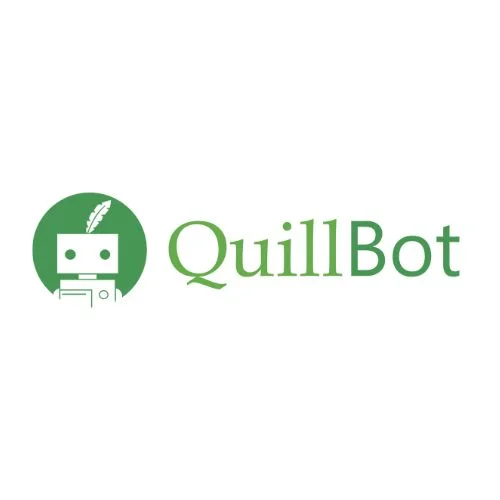
QuillBot
AI tool that improves writing with smart paraphrasing, grammar checks & image generation.

Carepatron
AI platform for managing healthcare workflows, notes, and patient collaboration.
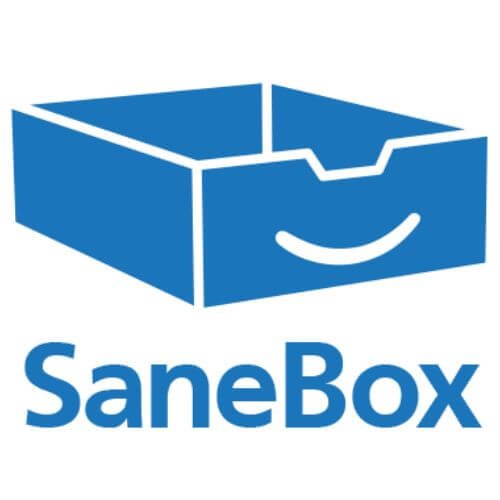
Sanebox AI
AI tool organizes your inbox by automatically sorting emails and reducing clutter.

